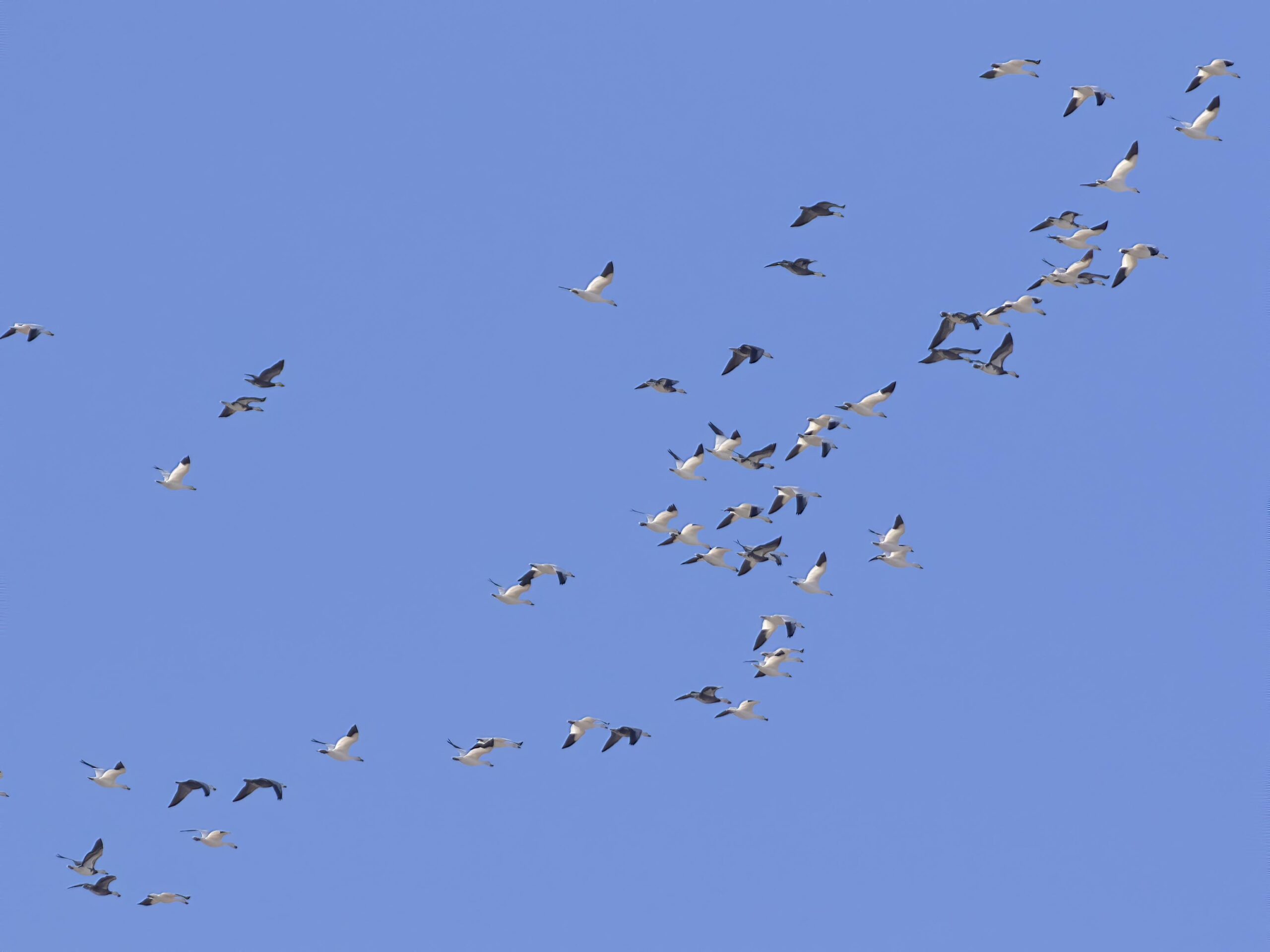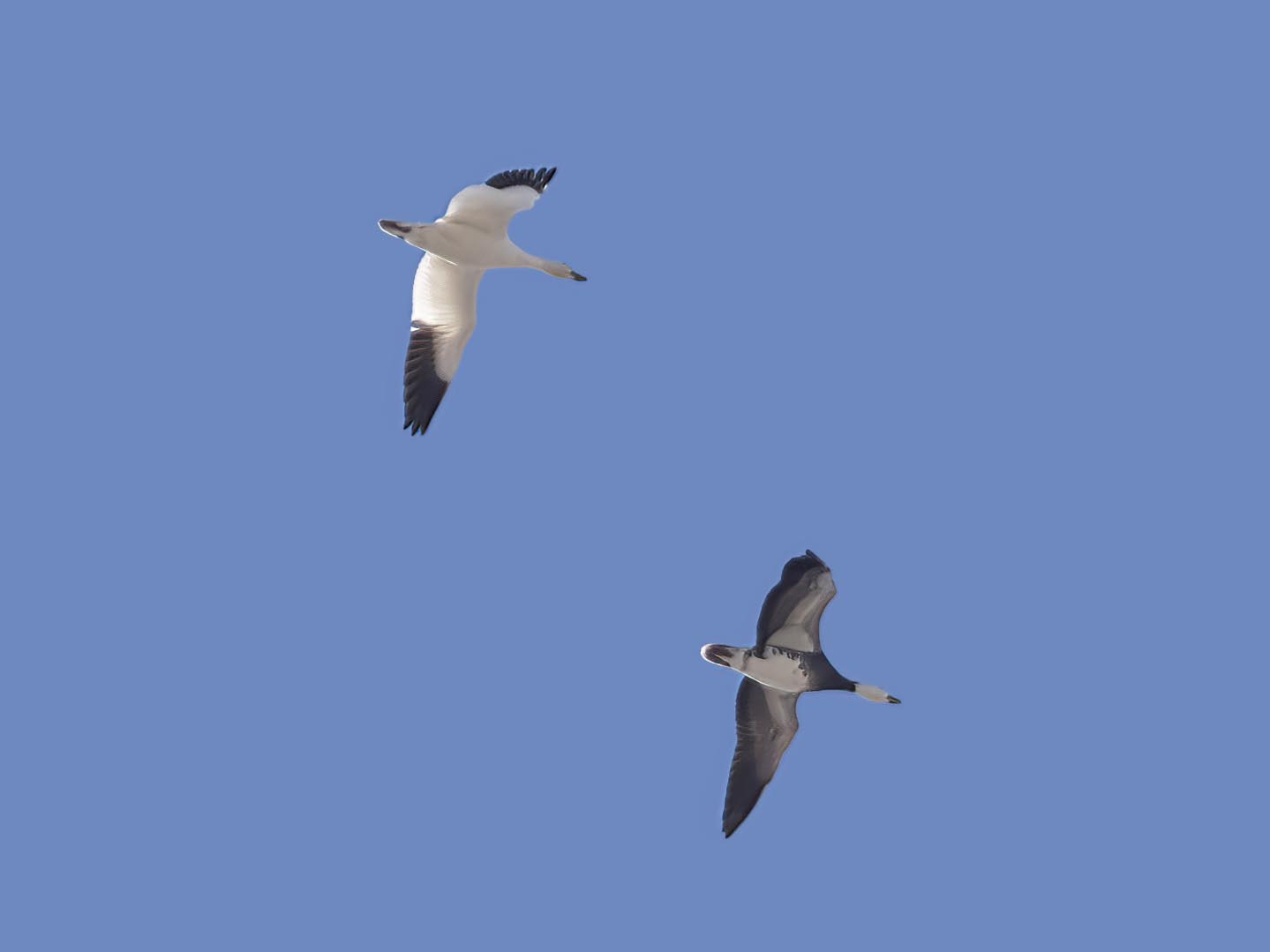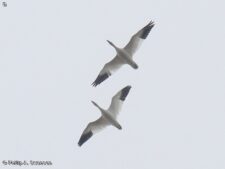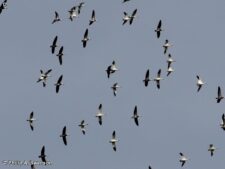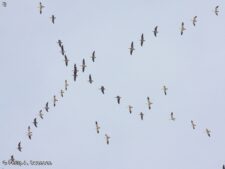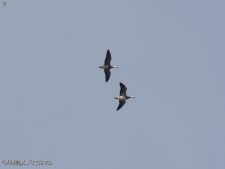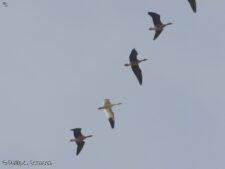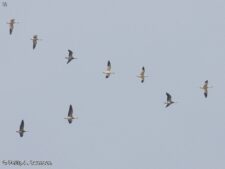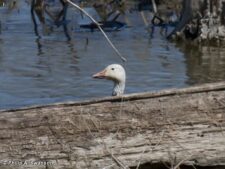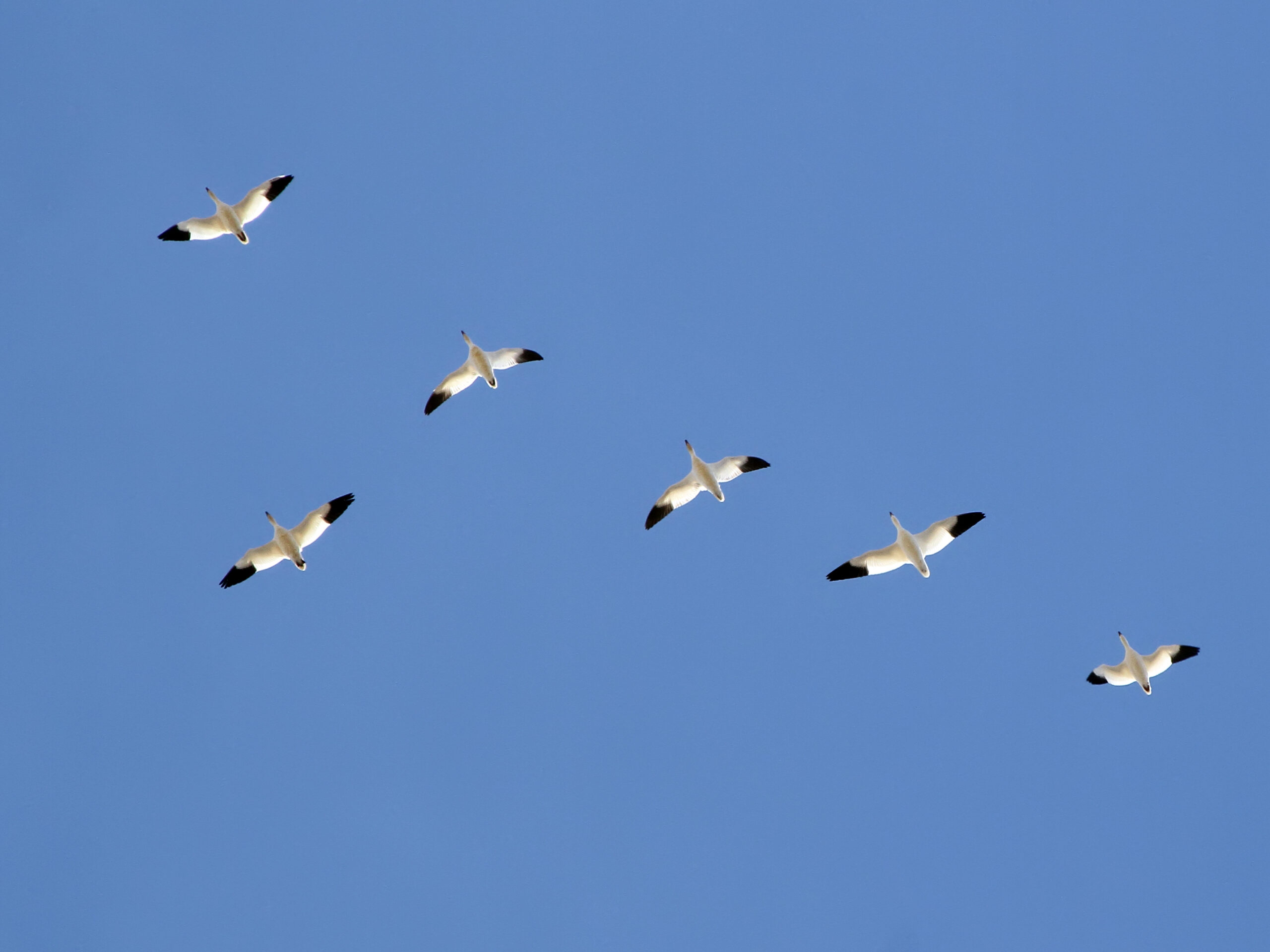
28 inches long with a wingspan of 53 inches. The sexes of the Snow Goose are similar. The legs and feet are pink in adult birds. There is a distinctive black (“smile”) patch along the side of the bill. There are two different plumage phases, the white phase and the dark (blue) phase. The adult white phase has entirely white plumage with black on the wing tips. There is sometimes an orangish wash on the side of the head. The adult blue phase has a white head and upper neck. The lower neck and body are dark although some birds may have white bellies. The upper wing is dark. The white phase Ross’ Goose is extremely similar to the white phase Snow Goose. The Ross’ Goose is smaller with a stubbier bill without the black patch on the mandibles. It also appears rounder-headed with a shorter neck
The Snow Goose is a somewhat common migrant that is best seen when flying over the Forest in February through mid April and again in October through December.
The dark phase of the Snow Goose was at one time considered a separate species called the Blue Goose. This medium-sized goose is one of the most abundant species of waterfowl in the world. During migration and on the wintering grounds, they often congregate in very large flocks. Omaha is on one of the large migration paths. This species exhibits life-long pair bonds formed usually away from the breeding grounds during the second year of life. The family unit is strong, with goslings remaining with the family until mate selection during their second or third year. One of the first indications that there are Snow Geese around is the distant sound of baying hounds. As you look up, you see the sky flecked with waves of tiny white moving shapes in a bunched flock or a broad “U” shape. The call is nasal barking “owk, owk”.
Disclaimer: The content of NatureSearch is provided by dedicated volunteer Naturalists of Fontenelle Forest who strive to provide the most accurate information available. Contributors of the images retain their copyrights. The point of contact for this page is: Phil Swanson.

